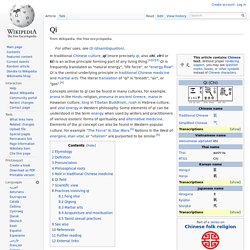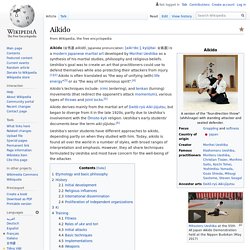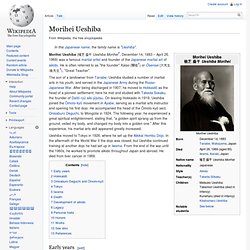

Qi - Wikipedia, the free encyclopedia - Iceweasel. Etymology[edit] The etymological explanation for the form of the qi logogram (or chi) in the traditional form 氣 is "steam (气) rising from rice (米) as it cooks".

The earliest way of writing qi consisted of three wavy lines, used to represent one's breath seen on a cold day. A later version, 气, identical to the present-day simplified character, is a stylized version of those same three lines. For some reason, early writers of Chinese found it desirable to substitute for 气 a cognate character that originally meant to feed other people in a social context such as providing food for guests.
[citation needed] Appropriately, that character combined the three-line qi character with the character for rice. Definition[edit] References to concepts analogous to the qi taken to be the life-process or flow of energy that sustains living beings are found in many belief systems, especially in Asia. The ancient Chinese described it as "life force". Pronunciation[edit] Philosophical roots[edit] Aikido - Wikipedia, the free encyclopedia - Iceweasel. Modern Japanese martial art Aikido (合気道, aikidō, Japanese pronunciation: [aikiꜜdoː], kyūjitai: 合氣道) is a modern Japanese martial art developed by Morihei Ueshiba as a synthesis of his martial studies, philosophy and religious beliefs.

Ueshiba's goal was to create an art that practitioners could use to defend themselves while also protecting their attackers from injury.[1][2] Aikido is often translated as "the way of unifying (with) life energy"[3] or as "the way of harmonious spirit".[4] Mitsuteru Ueshiba at the 55th All Japan Aikido Demonstration held at the Nippon Budokan (May 2017) Aikido derives mainly from the martial art of Daitō-ryū Aiki-jūjutsu, but began to diverge from it in the late 1920s, partly due to Ueshiba's involvement with the Ōmoto-kyō religion. Ueshiba's early students' documents bear the term aiki-jūjutsu.[6] Ueshiba's senior students have different approaches to aikido, depending partly on when they studied with him. Etymology and basic philosophy[edit] History[edit] Morihei Ueshiba - Wikipedia, the free encyclopedia - Iceweasel.
Morihei Ueshiba (植芝 盛平, Ueshiba Morihei?

, December 14, 1883 – April 26, 1969) was a famous martial artist and founder of the Japanese martial art of aikido. He is often referred to as "the founder" Kaiso (開祖?) Or Ōsensei (大先生/翁先生?) , "Great Teacher". The son of a landowner from Tanabe, Ueshiba studied a number of martial arts in his youth, and served in the Japanese Army during the Russo-Japanese War. Ueshiba moved to Tokyo in 1926, where he set up the Aikikai Hombu Dojo. Early years[edit] Morihei Ueshiba was born in Tanabe, Wakayama Prefecture, Japan on December 14, 1883, the fourth child (and only son) born to Yoroku Ueshiba and his wife Yuki.[1][2]:5–10 Morihei was raised in a somewhat privileged setting. At the age of six Ueshiba was sent to study at the Jizōderu Temple, but had little interest in the rote learning of Confucian education.
In 1903, Ueshiba was called up for military service. Ueshiba is known to have studied several martial arts during his early life. Hokkaidō[edit] ...